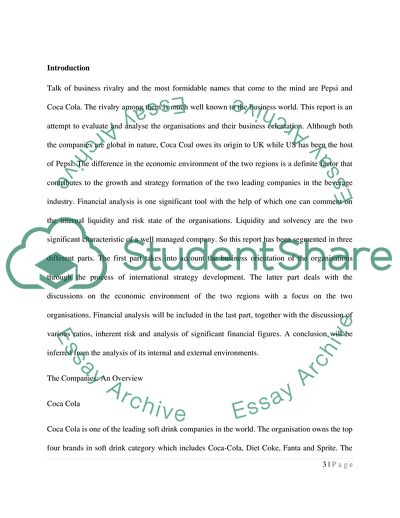Cite this document
(Pepsi Versus Coca Cola Case Study Example | Topics and Well Written Essays - 2250 words, n.d.)
Pepsi Versus Coca Cola Case Study Example | Topics and Well Written Essays - 2250 words. https://studentshare.org/finance-accounting/1738803-financial-analysis-of-pepsi-vs-coca-cola
Pepsi Versus Coca Cola Case Study Example | Topics and Well Written Essays - 2250 words. https://studentshare.org/finance-accounting/1738803-financial-analysis-of-pepsi-vs-coca-cola
(Pepsi Versus Coca Cola Case Study Example | Topics and Well Written Essays - 2250 Words)
Pepsi Versus Coca Cola Case Study Example | Topics and Well Written Essays - 2250 Words. https://studentshare.org/finance-accounting/1738803-financial-analysis-of-pepsi-vs-coca-cola.
Pepsi Versus Coca Cola Case Study Example | Topics and Well Written Essays - 2250 Words. https://studentshare.org/finance-accounting/1738803-financial-analysis-of-pepsi-vs-coca-cola.
“Pepsi Versus Coca Cola Case Study Example | Topics and Well Written Essays - 2250 Words”. https://studentshare.org/finance-accounting/1738803-financial-analysis-of-pepsi-vs-coca-cola.


